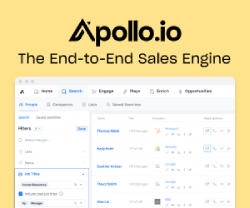
What is Uber Eats and how does it work?
Uber Eats is a leading online food delivery platform operated by Uber Technologies. It connects customers, restaurants, and couriers through a seamless app and web interface, allowing anyone to order meals from local restaurants and have them delivered directly to their doorstep. Launched in 2014 as an offshoot of the Uber ride-hailing service, Uber Eats has since grown into a major logistics network that powers millions of food deliveries every day across more than 6,000 cities worldwide.
The system runs on a three-way marketplace model: customers place orders, restaurants prepare them, and independent couriers handle delivery using cars, bikes, or scooters. The app integrates real-time tracking, transparent pricing, and automated payments, creating a smooth digital experience for all parties involved.
What are the key features of Uber Eats?
-
Real-Time Order Tracking
Customers can see exactly when their meal is being prepared, when the courier picks it up, and the estimated delivery time, all visualized on an interactive map. -
Smart Recommendations and Search
The platform uses algorithms to suggest restaurants and dishes based on user preferences, previous orders, and trending options nearby. -
Flexible Delivery and Pickup Options
Users can choose between home delivery, curbside pickup, or in-store pickup. Scheduled orders are also available for specific times. -
Wide Restaurant Network
From global chains to local eateries, Uber Eats provides access to thousands of food options across multiple cuisines and dietary types. -
Integrated Payment System
Secure, cashless transactions through credit cards, PayPal, Apple Pay, or other local payment methods. Tipping can be added directly in-app. -
Partner and Courier Support Tools
Restaurants have a dedicated dashboard to manage menus, pricing, and promotions. Couriers use a separate app for route optimization and income tracking. -
Promotions and Loyalty Rewards
The platform frequently runs discount campaigns, free-delivery promotions, and subscription programs like Uber One for reduced fees and exclusive benefits.
What are common use cases for Uber Eats?
-
Everyday Convenience
Individuals order meals at work or home without needing to cook or commute—ideal for busy professionals or students. -
Group Orders
Office teams and families can create shared carts to simplify bulk orders with split payments. -
Restaurant Expansion Strategy
Local restaurants use Uber Eats to reach new audiences beyond physical foot traffic, turning the platform into an additional sales channel. -
Event and Late-Night Delivery
Many cities support late-night and 24-hour options, making the service useful for events, parties, or irregular schedules. -
Subscription-Based Customers
Heavy users benefit from Uber One subscriptions for zero-fee delivery and lower service charges, improving retention and loyalty.
What are the main benefits of using Uber Eats?
Uber Eats offers a fast, convenient, and intuitive way to access food anywhere, anytime. For customers, it means less time planning and more time enjoying meals. For restaurants, it reduces the need to invest in their own delivery infrastructure. For couriers, it creates flexible earning opportunities with minimal entry barriers.
The service continuously optimizes delivery efficiency using AI-driven route management and demand prediction, which reduces wait times and food waste. Its scalable network design makes it reliable even during peak hours. The brand’s integration with Uber’s existing ride-sharing ecosystem ensures strong logistics, consistent app quality, and widespread trust.
How is the user experience on Uber Eats?
The Uber Eats interface is designed for simplicity and speed. Upon opening the app or website, users see restaurants categorized by cuisine, price, and rating. Filters for delivery time, dietary preferences, and promotions make navigation intuitive. Checkout takes only a few taps, and live tracking provides constant feedback.
The visual design emphasizes transparency: clear photos of dishes, delivery estimates, and upfront pricing reduce uncertainty. Push notifications alert users about order progress, delays, or courier arrival. Post-delivery, users can rate both the restaurant and courier, influencing future recommendations.
Restaurants experience a similarly optimized workflow. The merchant dashboard synchronizes with their POS systems, showing incoming orders in real time. Couriers receive smart routing suggestions to minimize idle time and fuel costs.
Overall, Uber Eats succeeds by transforming complex urban food logistics into an accessible, digital-first experience that prioritizes speed, reliability, and personalization. Whether you are a customer craving convenience, a restaurant seeking growth, or a courier looking for flexible income, Uber Eats provides a unified ecosystem that makes modern food delivery effortless.






